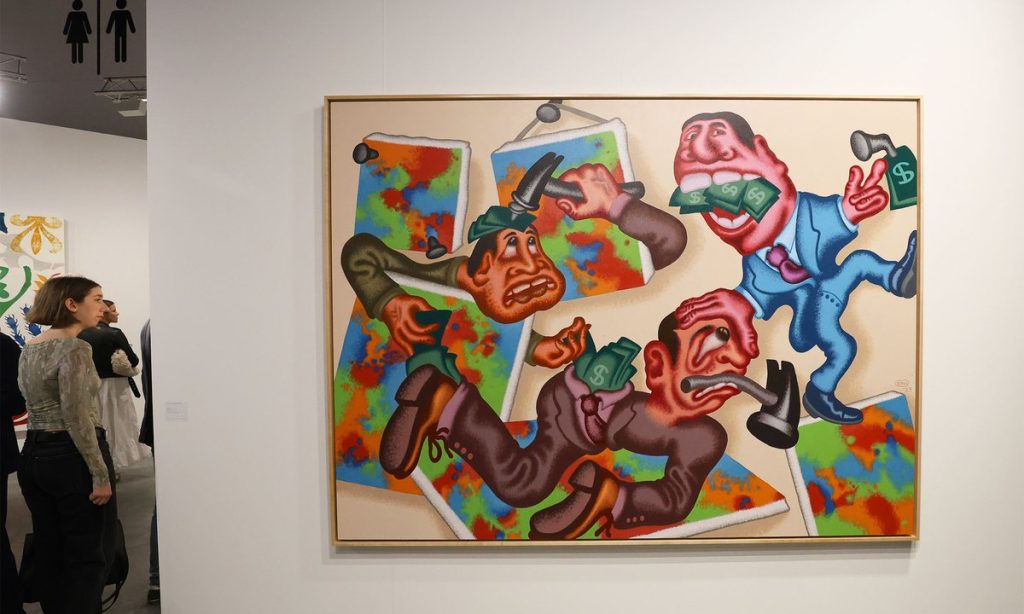
In 2022, the arts and cultural industries continued to have a significant impact on the United States economy, generating a record $1.1 trillion in economic activity, or 4.3% of the nation’s gross domestic product (GDP), according to a new study. From the US Arts and Cultural Production Satellite Account (ACPSA).
The ACPSA report, released March 25, is the result of a collaborative research effort between the National Endowment for the Arts (NEA) and the Bureau of Economic Analysis (BEA). By tracking the economic value of arts and cultural production across 35 industries, including commercial enterprises and non-profit organizations, the report seeks to demonstrate the significant impact that arts and culture have on the nation’s economic landscape.
Despite record economic activity in the sector (more than $1 trillion in 2021), financial gains were not evenly distributed among all industries, with ten industries falling below pre-pandemic valuations, including performing arts organizations, non-governmental museums and the arts. related construction.
However, the arts and culture sector had an overall upward trajectory, growing by 4.8% from 2021 to 2022, compared to a modest 1.9% growth in the economy during that period. Notably, the arts and culture industries experienced a remarkable economic recovery after the Covid-19 pandemic, growing by 13.6% between 2019 and 2022, far outpacing national economic growth over the same period, which was only 5.5%.
Looking at the specifics, the report reveals that web publishing and streaming, broadcasting, government services, publishing, and the film and video industries are among the top industries driving this economic boom. The nation’s largest arts and culture industry — web publishing and streaming services — posted a decline for the first time in recent history, falling 1.4% between 2019 and 2021 after a remarkable 40.9% growth.
Although several industries advanced in 2022, 25 of the 35 industries exceeded the values recorded in 2019, while others experienced setbacks. Six sectors, including custom architectural carpentry and metal fabrication, arts-related construction, and theater ticket agency, experienced a significant decline of more than 10% in economic value from 2019 to 2022.
Amid these differences, several industries have shown resilience and recovery. Independent artists, writers and performers, performing arts presenters and agents and managers exceeded the 2019 value added level. Performing arts organizations achieved a remarkable recovery, with a 76.5% increase in value added between 2021 and 2022, although their economic contribution is below what it was before the pandemic.
At the state level, the dataset indicates that every state has increased the economic value of its arts and culture industries since 2019. The 2022 report shows continued economic growth in the arts and cultural industries among all states, with 21 states exceeding 10% of growth (when not adjusted for inflation).
In addition to significant economic contributions and impressive growth that is eclipsing the broader US economy, arts and cultural institutions saw employment levels rise. The 2022 report reveals that employment in the sector has rebounded to pre-pandemic levels, and the workforce has expanded to 5.2 million workers. Significant increases were seen in computer system design, web publishing and streaming, and among independent artists, writers and performers. But even amid steady growth trends, some industries struggled to return to pre-pandemic figures, with 15 of the 35 arts and cultural institutions surveyed falling below 2019 employment levels. Estimates of economic value, employment and compensation at the state level between 2017 and 2022 are represented by an interactive map feature..
“Research shows again that arts and culture make up a significant portion of our nation’s GDP, contributing to the strength of our national and state economies,” NEA President Maria Rosario Jackson said in a statement. Highlighting areas of the sector that remain below pre-pandemic levels, he suggested that “among the evidence of important contributions, there is also evidence of a more complicated story where dimensions of the cultural sector are still struggling”.
While the numbers are evidence of the significant impact that arts and culture have had on the nation’s economic landscape, Jackson’s collection of that data and the development of a narrative around it is seen as only part of measuring the impact of the arts. He added, “Along with economic value, we must also remember that arts and culture improve the lives and communities of Americans in many other tangible ways.”
In light of the new dataset, the NEA will launch a new set of research and data tools on April 2, highlighting key developments and trends, including arts and cultural assets.


